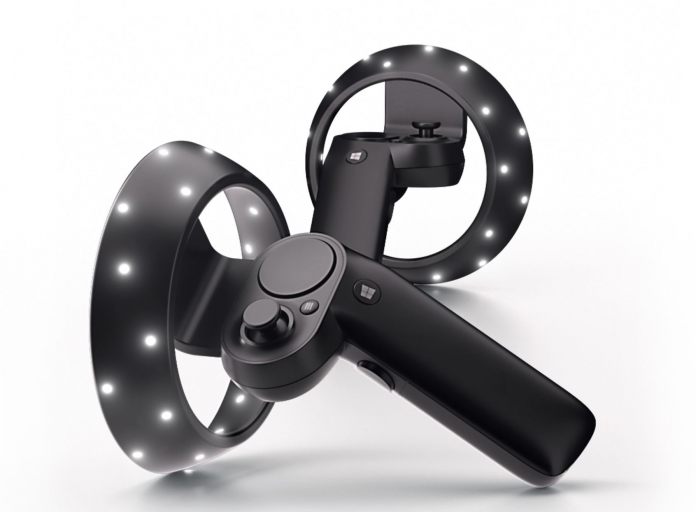The company allayed those concerns yesterday with a pair of motion controllers for Windows Mixed Reality. Visually, they are similar to the Vive, but there are some small changes that make it more suitable for the new platform.
Design Changes
The controllers will use the headset for tracking, rather than relying on external sensors or cameras. The result is a much more compact experience, but it doesn’t come without some design changes. Where the Vive’s tracking rings are horizontal, Microsoft’s sit upright when the device is in your hand. This means the headset can get a good angle on the LEDs that sit on those rings, and eliminates the need for external sensors.
It’s a small change, and arguably comes down to preference. Thankfully, Microsoft will be including all of the usual features, including a touchpad, analog stick, menu button, trigger, and Windows key. “A customer who pairs a Windows Mixed Reality headset with motion controllers will have a rich and immersive experience across creativity tools, productivity, games, and entertainment,” explained Terry Myerson, executive vice president for the Windows and devices group. “We created the controllers as a high-quality and comfortable input device with the same ease of setup and portability as our headsets.” That quality will come at a considerable price, though admittedly less than the Vive. Acer will sell a bundle for $399, compared to the $299 standalone headset. Microsoft will also be selling the controllers separately via its partners, though there’s no word on how much more that will cost. Windows Mixed Reality controllers will begin hitting the shelves “this holiday” alongside their respective devices.




